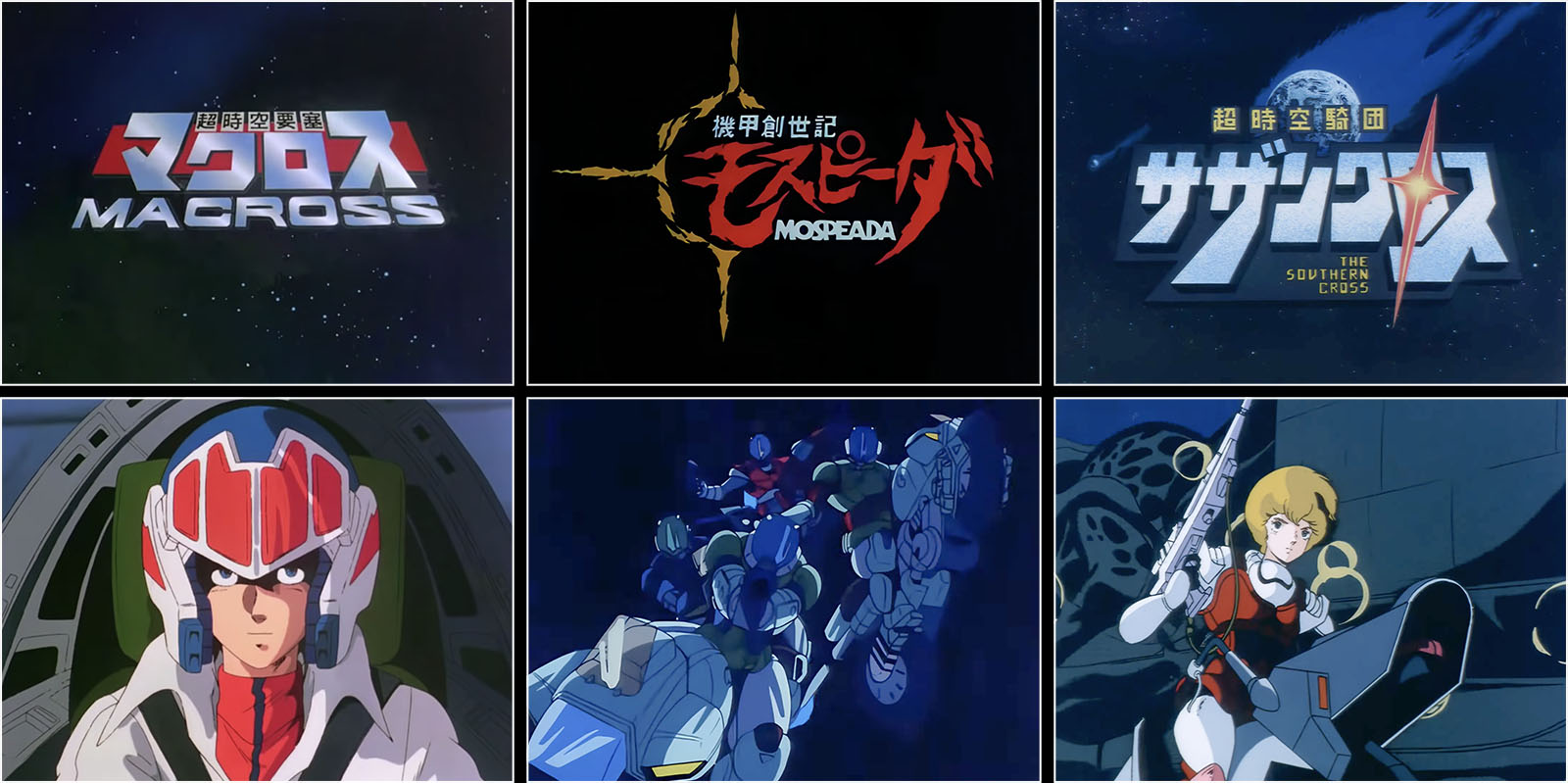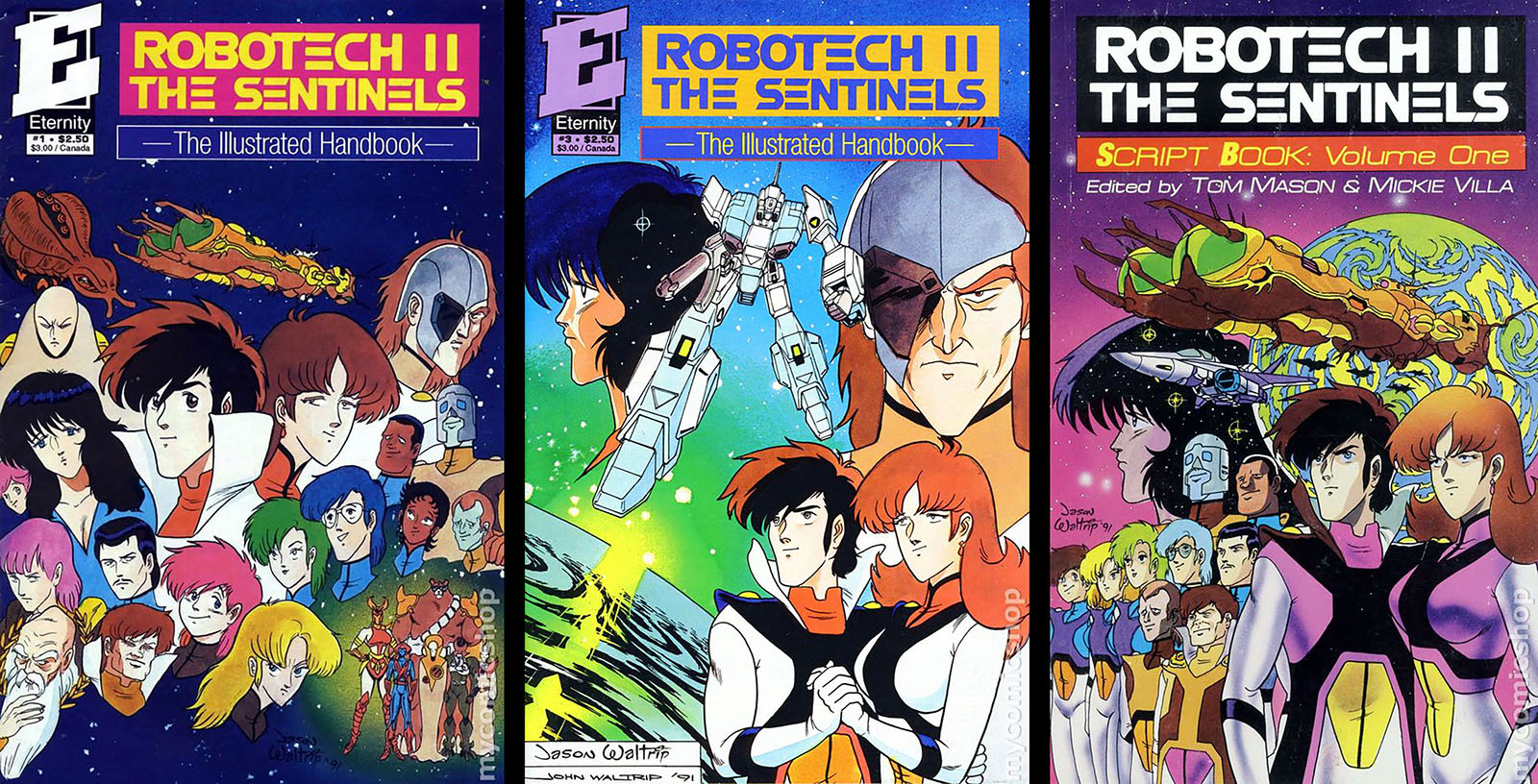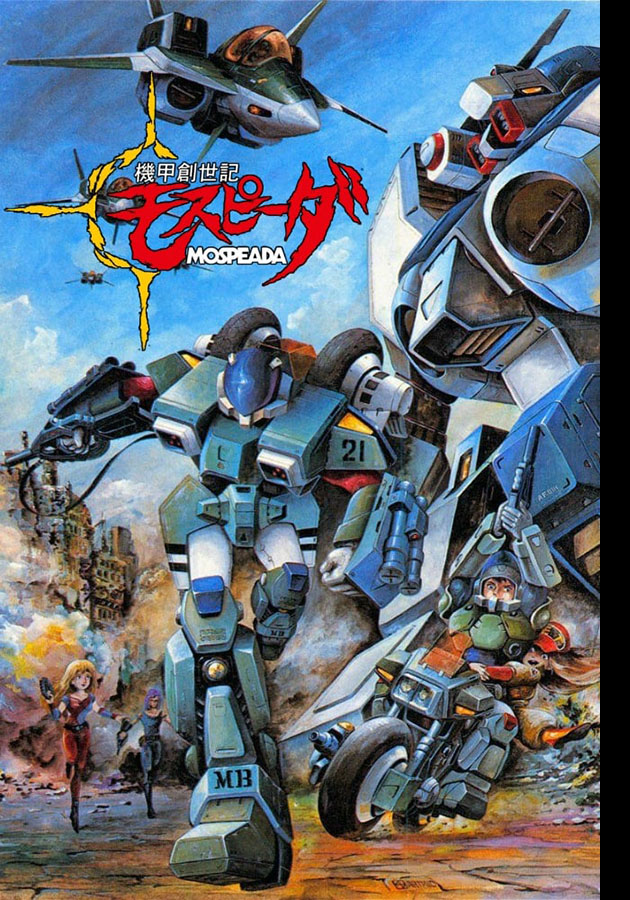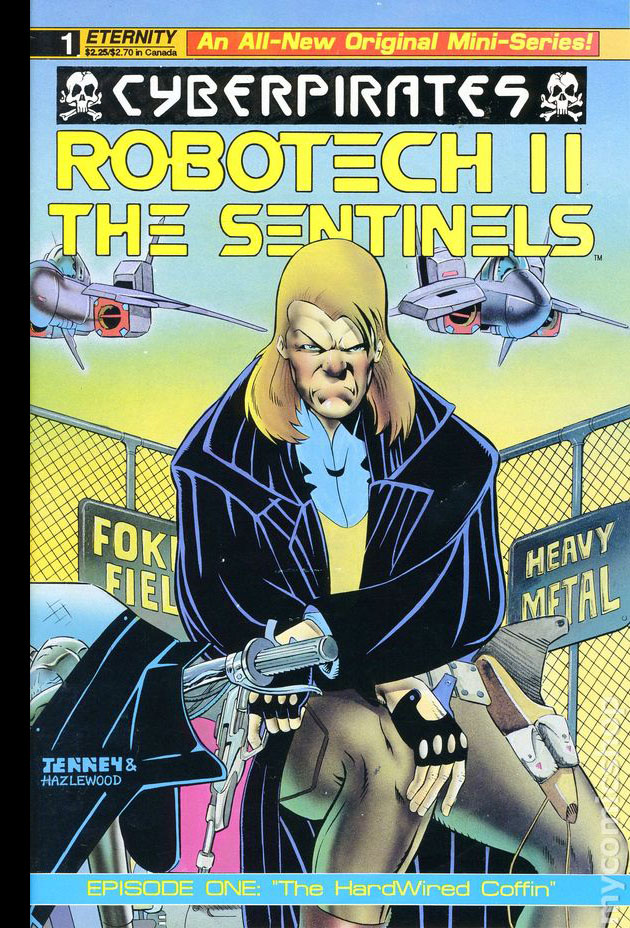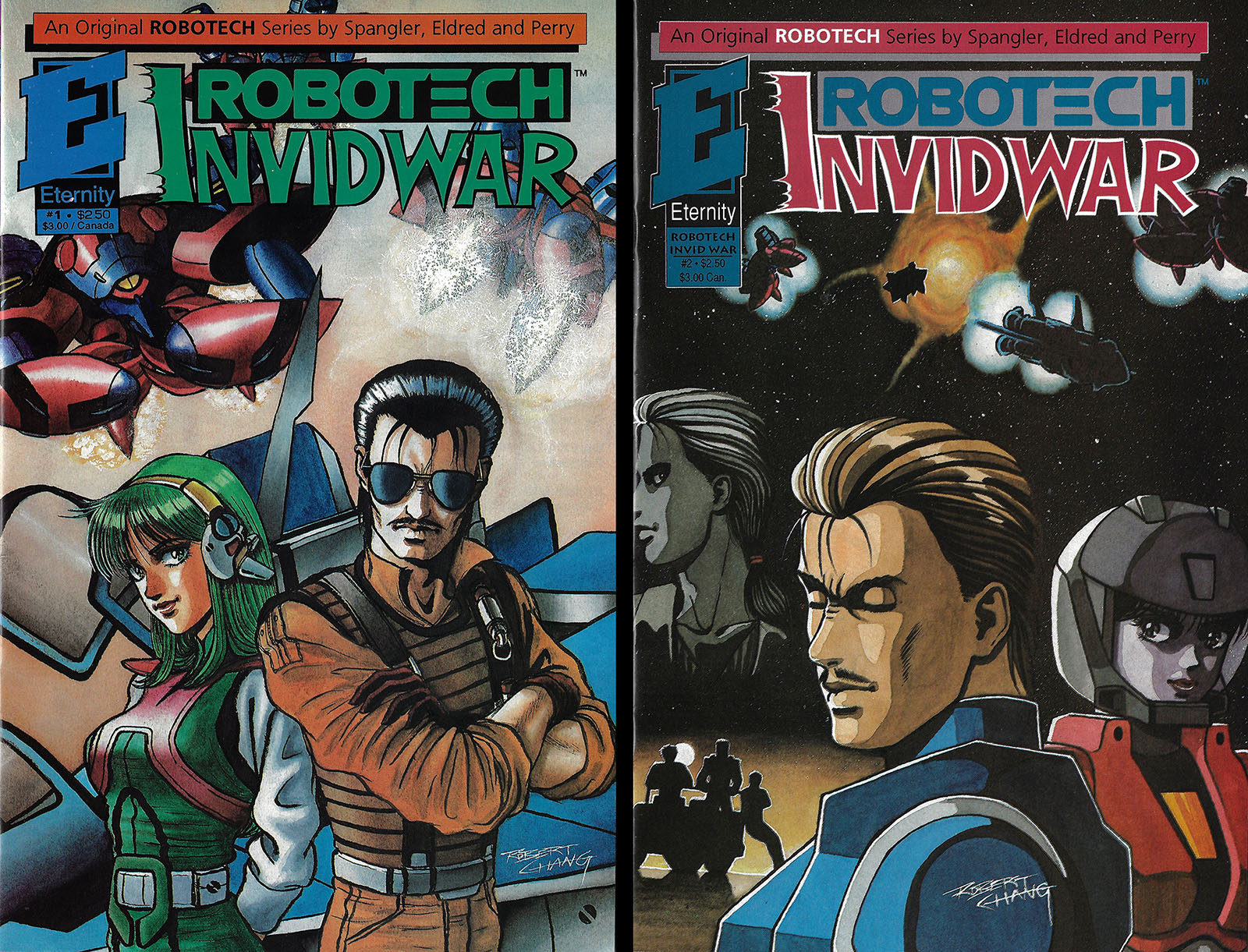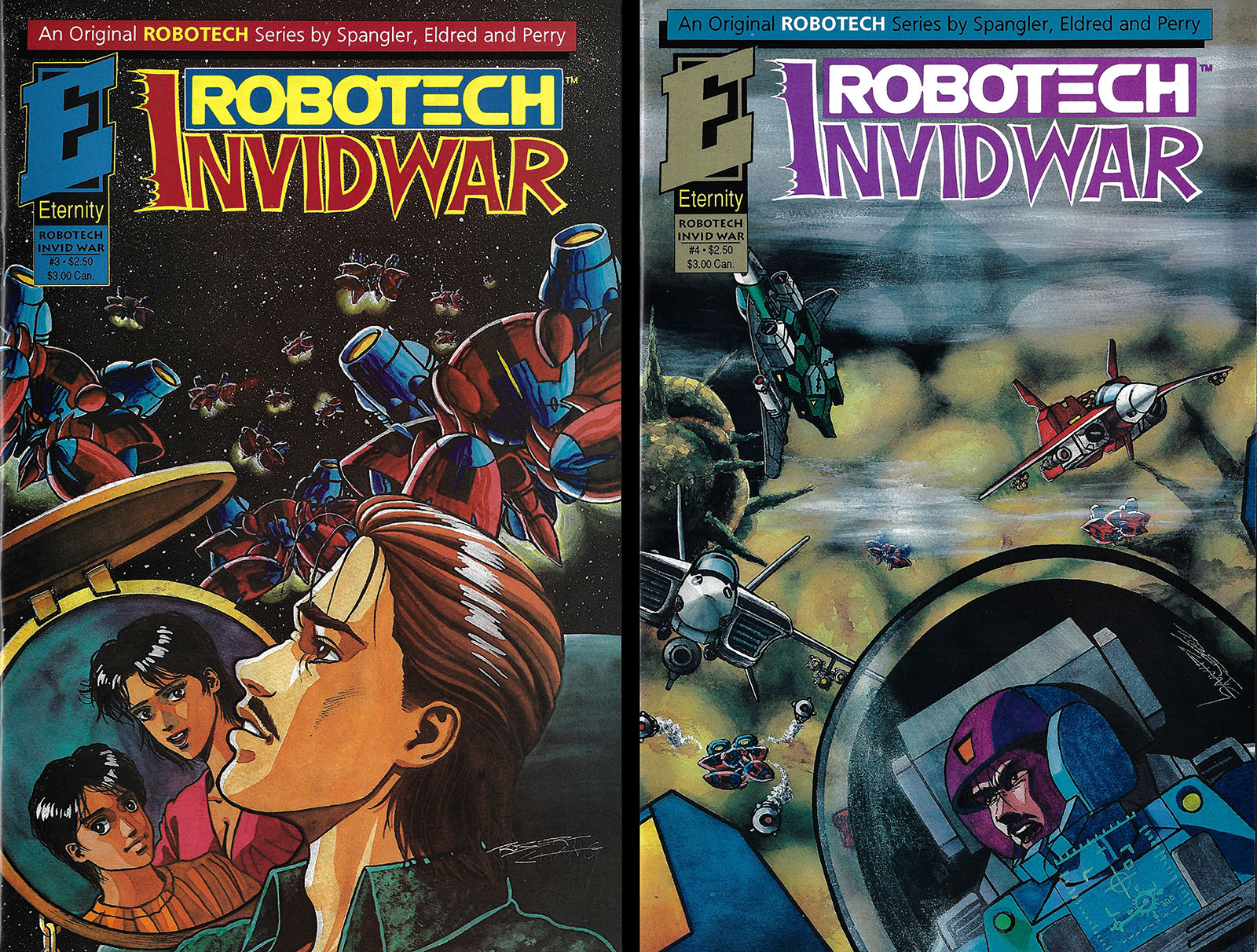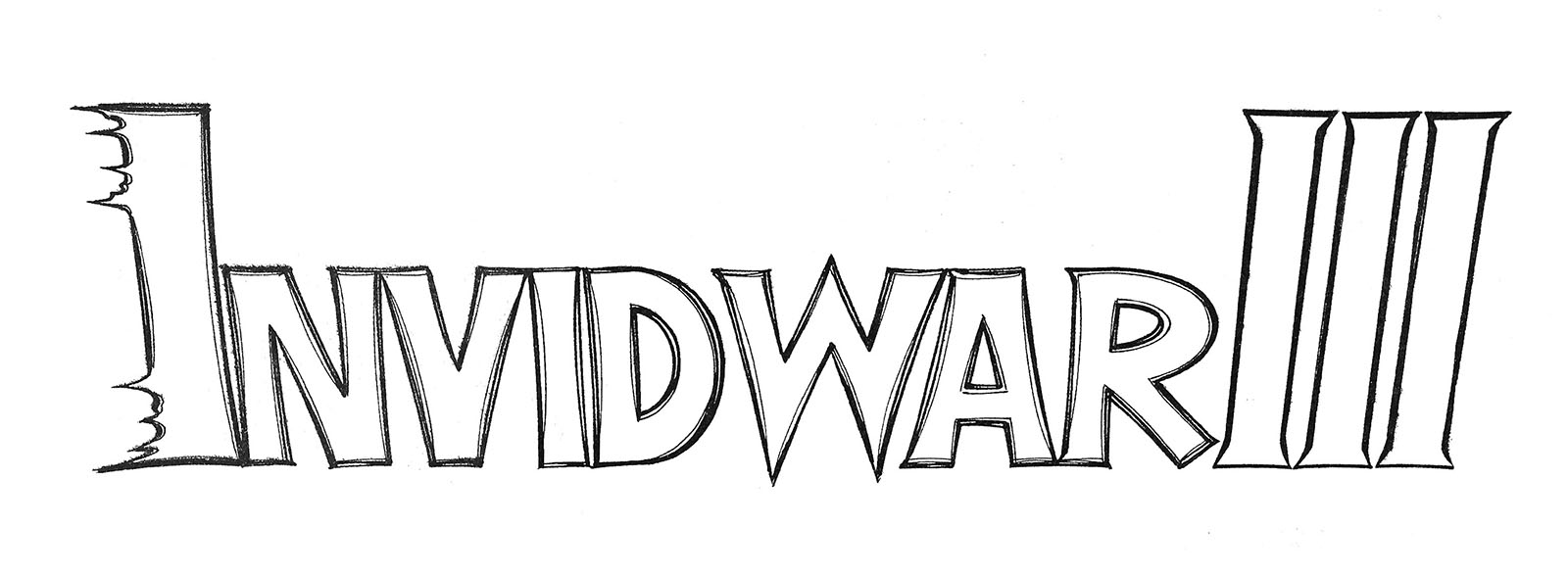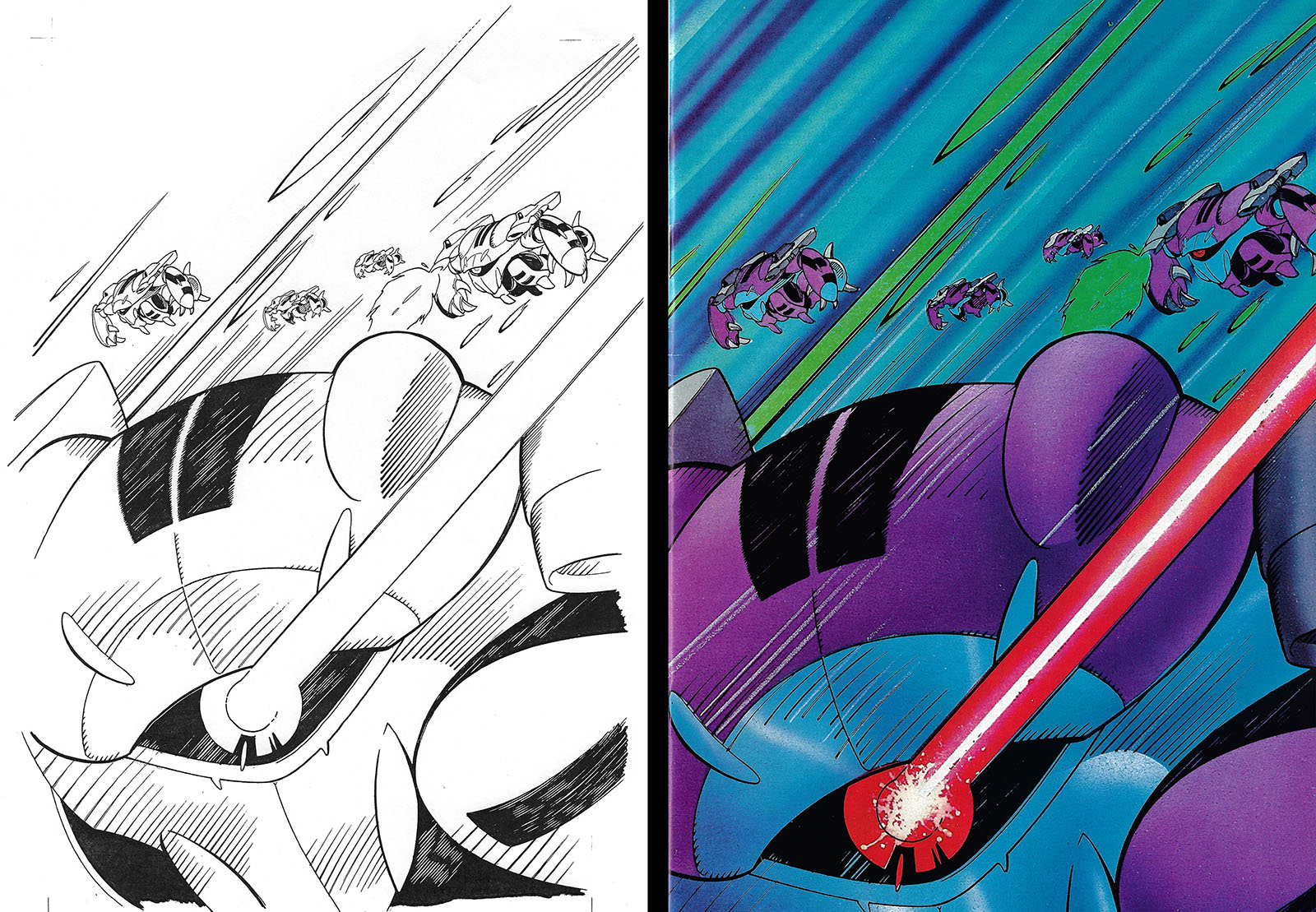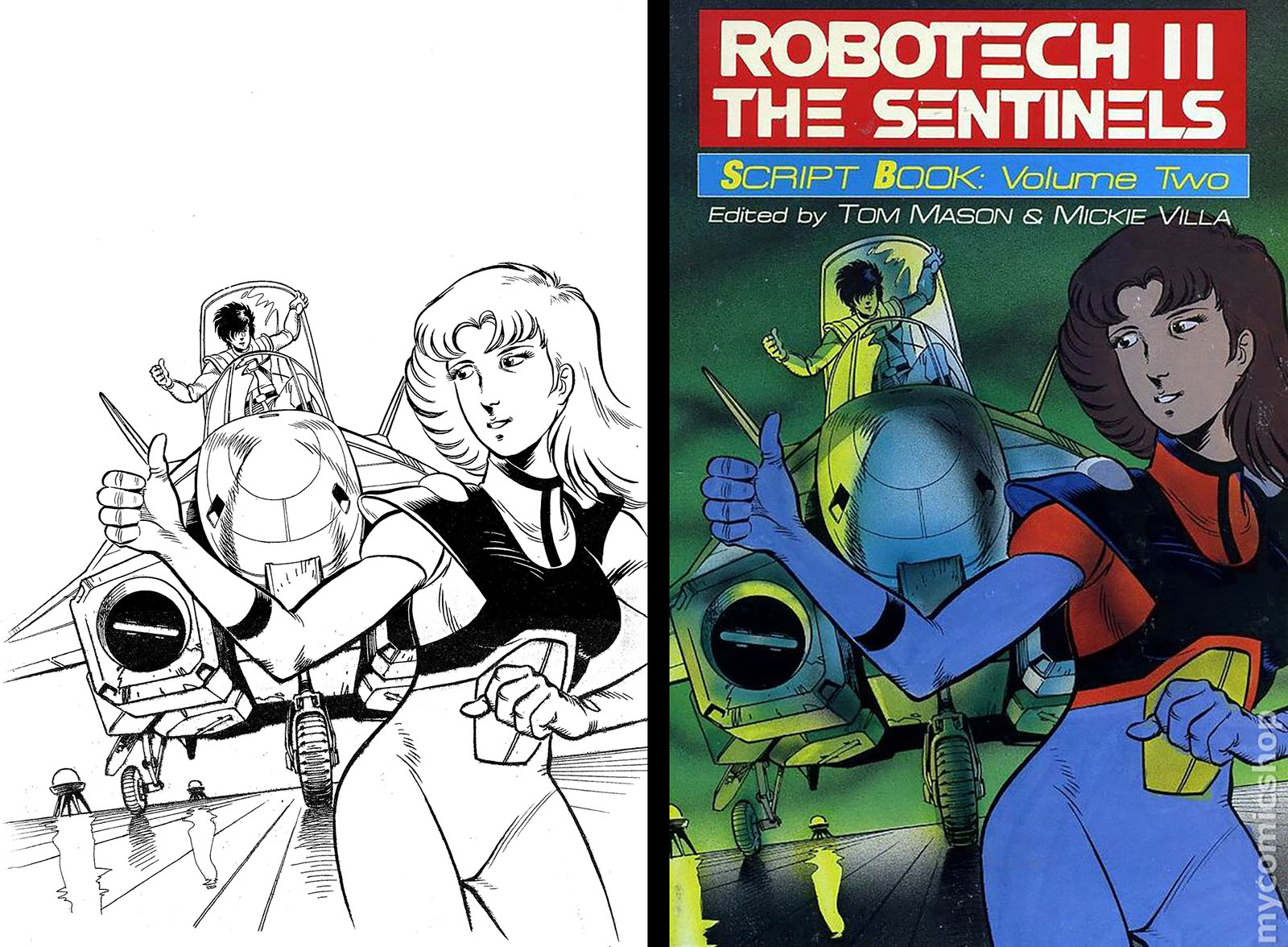Robotech: Invid War issues 1-4, 1992
Pretty much since the beginning of my work for Eternity Comics, the editor of the Robotech titles was nudging me to consider drawing one. And pretty much from the first time he brought it up, I shot it down. There was a time not so long before that I would have said yes in a hot second. But that time had passed.
Let’s begin at the beginning. In 1982, 1983, and 1984 respectively, three different and wholly disconnected anime programs debuted in Japan: Macross, Mospeada, and Southern Cross. Through a maze of co-licensing deals (partially described here) all three shows ended up in the hands of an American company named Harmony Gold. This company repackaged them into a continuous 85-episode syndication package called Robotech that debuted on American TV in 1985. The show opened new doors for anime in the west, inviting a whole generation of fans into the fold. This was a good thing. The way Harmony Gold chose to do it was not.
I got hooked on anime five years earlier thanks to Star Blazers, which put me in a position to know something about the original shows before they fell into the Robotech bucket. I threw a lot of skunk-eye at the changes that had been forced into the stories, the uneven voice acting, the hammy scripts, and the ear-splitting music. The promotion for the show kept claiming these things were strengths, but to me they were weaknesses. The only thing holding it all together was the quality of the original works. Everything that made it Robotech, in my opinion, was a demotion.
Beyond that, the thing that really frosted my flakes was the credit-jacking. The only hint at all that the shows came from Japan was in the two credit screens shown below, which aren’t even accurate. If you didn’t know better, you’d think these Harmony Gold characters invented all of it on their own. Unforgivable.
Then there were the comic book adaptations that popped up like weeds from a publisher called Comico. They seemed to go out of their way to find the worst artists they could get, as if the editor had suddenly been struck blind or just assumed if it sort of looked like “Japanimation,” it would lure in the crowd that liked that stuff for whatever weird reason. This is what would have made me say “yes” to a comic assignment back then; the chance to correct what I saw as a huge mistake.
It got worse when Harmony Gold produced its own sequel called Robotech II: The Sentinels. With no original anime to fall back on, it was typical late 80s cartoon junk food that only lasted three episodes before the plug was mercifully pulled. From there, it shifted over to a series of novels in 1988. This is where Eternity Comics entered the fray, launching a comic book adaptation that same year. Regrettably, they continued the Comico tradition of giving it to artists who could only imitate rather than innovate. Everything they did was instantly forgettable.
Too harsh? Too bad. From where I sat, this chain of crappy dubs and even crappier comics was derogatory toward the source material, and would do more harm than good. Fortunately, the truth got out and rolled right over this stuff in a few more years. But when the Eternity editor started asking me to do a Robotech comic, I wanted no part of it. Between Lensman, Captain Harlock, and my original titles, I had enough on my plate anyway.
So what changed?
A couple things. First, a licensing expansion. Prior to 1991, Eternity could only create Sentinels comics (yuck). After that, Harmony Gold loosened the reins and allowed them to broaden the scope. Now every part of the “Robotech timeline” was on the table, and I could actually draw something I liked.
Second, and there’s no way to sugar-coat this, my original titles were being crushed by the marketplace. Out of my three attempts to crack the nut, two of them (Broid and Ground Zero) both got canceled before they could finish. I was tired of watching my children get murdered, and Mr. Editor was tired of losing money.
Our compromise was clear: I would consent to create a Robotech comic, but I wouldn’t get stuck under the dark, derpy cloud of The Sentinels. I could pick any other part of the story, and my instant choice was The New Generation (A.K.A. Mospeada).
Five years earlier, it would have been Macross. But by 1986 or so, I’d fully digested the story, bought a bunch of books, built a ton of models, and didn’t care to spend any more time on it. I’d never seen Southern Cross and didn’t know much about it, but it held no visual appeal for me. When I finally did get around to watching it in 2019, I found it to be uniformly awful. One of the worst anime shows I’d ever seen. So maybe my initial instincts were right.
But Mospeada…that one spoke to me. A gang of misfits on the run in post-apocalyptic landscapes with cobbled-together mecha pitted against alien overlords? Right in my wheelhouse. If I could create a prequel to that story and pretend it was a Mospeada comic instead of Robotech, I could definitely get interested. The title dropped into my head right away, seemingly from nowhere: Invid War.
The obstacle was, of course, all the barnacles brought to it by the Robotech re-skinning. Chronologically, Invid War would be set between Southern Cross and Mospeada, and – as I said – I hadn’t seen Southern Cross. I read what I could find about it, but still felt completely unqualified to pick up where it left off.
The remedy was obvious: I needed a writing partner. Fortunately, I got exactly the right guy.
Life During Invid Wartime
by Bill Spangler
Tim and I met at the 1990 San Diego Comic Con but we really didn’t get to know each other until we started to work on Invid War. We quickly learned that we shared an interest in telling the same types of stories, with a mixture of original characters and established characters from the Robotech universe. This journey of discovery took place through a series of late-night phone calls. Occasionally they were too late, but we soon worked out a schedule.
We collaborated on a total of 18 issues of Invid War, but, for the first year or so, the comic was commissioned in four-issue increments. This sounds awkward, but it allowed us to use a wide variety of locales and characters.
The details are a little fuzzy now, but I think my major contributions to the story in the first four issues were the burning oil fields in issue 4 and the use of Terry Weston, the protagonist of Cyberpirates, an earlier Robotech comic that I scripted. For reasons too convoluted to detail here, I decided this would be Terry’s last appearance, but that didn’t prove to be the case. My good friend Jim Luceno, who co-wrote the Robotech novels under the name Jack McKinney, took Terry under his wing and made him the protagonist of two novels. Synergy. It’s a good thing.
Looking through these issues again for the first time in…well, lets’s call it a very long time…I’m struck by the ease with which Tim could move from scenes of wide-scale destruction to more intimate moments. Sometimes he combined them. The second page of issue 4 is a particular favorite. On one level, you could call Tim and I working together on a comic a blind date. But, unlike some blind dates, this one worked out well for both of us.
(And I want to take a moment here to thank John Arce and Robert Casto, for their help in locating the references I needed to write this piece.)
Thanks, Bill! Always nice to hear from you.
Bill and his wife Joyce are facing serious financial issues due to a series of medical emergencies colliding with a series of household emergencies, and they urgently need your help. For more information on what you can do, click here.
And now, here are the first four issues from front to back. You’ll see them in two stages: my penciled & lettered draft, and the final published version. There’s a lot more to say about this project, but with 18 issues to cover, there will be ample time to dig deeper in future installments.
Issue 1: No Man’s Land
Production period: June/July 1991
Published May 1992
Issue 2: Salvation Run
Production period: July/August 1991
Published June 1992
Issue 3: Inferno Brigade
Production period: August/September 1991
Published July 1992
Issue 4: Only Survivors
Production period: September/October 1991
Published August 1992
Bonus stuff
My logo design for the series. Since we only had a 4-issue commitment at the beginning, I thought we could title it Invid War I and subsequent arcs could be titled Invid War II and Invid War III. We could just lop off the numbers as needed. But Eternity went another way. They also filled in this logo’s open slits to make sure it looked dumber.
My unused cover art for the first issue. It broke the “must-have-a-human-on-the-cover” rule, but I thought Robotech was niche enough to make an exception. The editor disagreed, and relegated this image to the back cover where not only was it cropped incorrectly, it was also printed upside-down. Stuff like this happened at Eternity all. The damn. Time.
My one and only foray into the Sentinels swamp was this cover art for a script book. Hey, it put food on the table.

